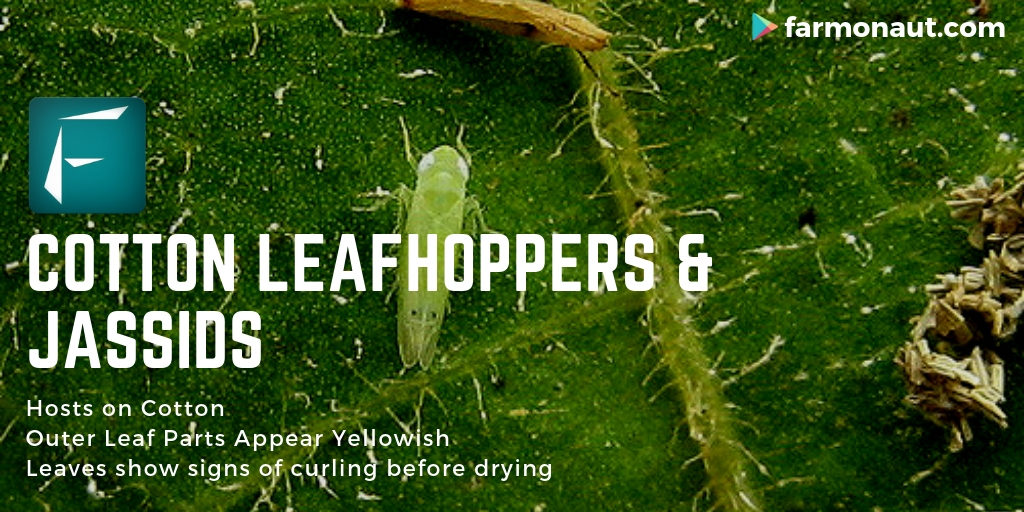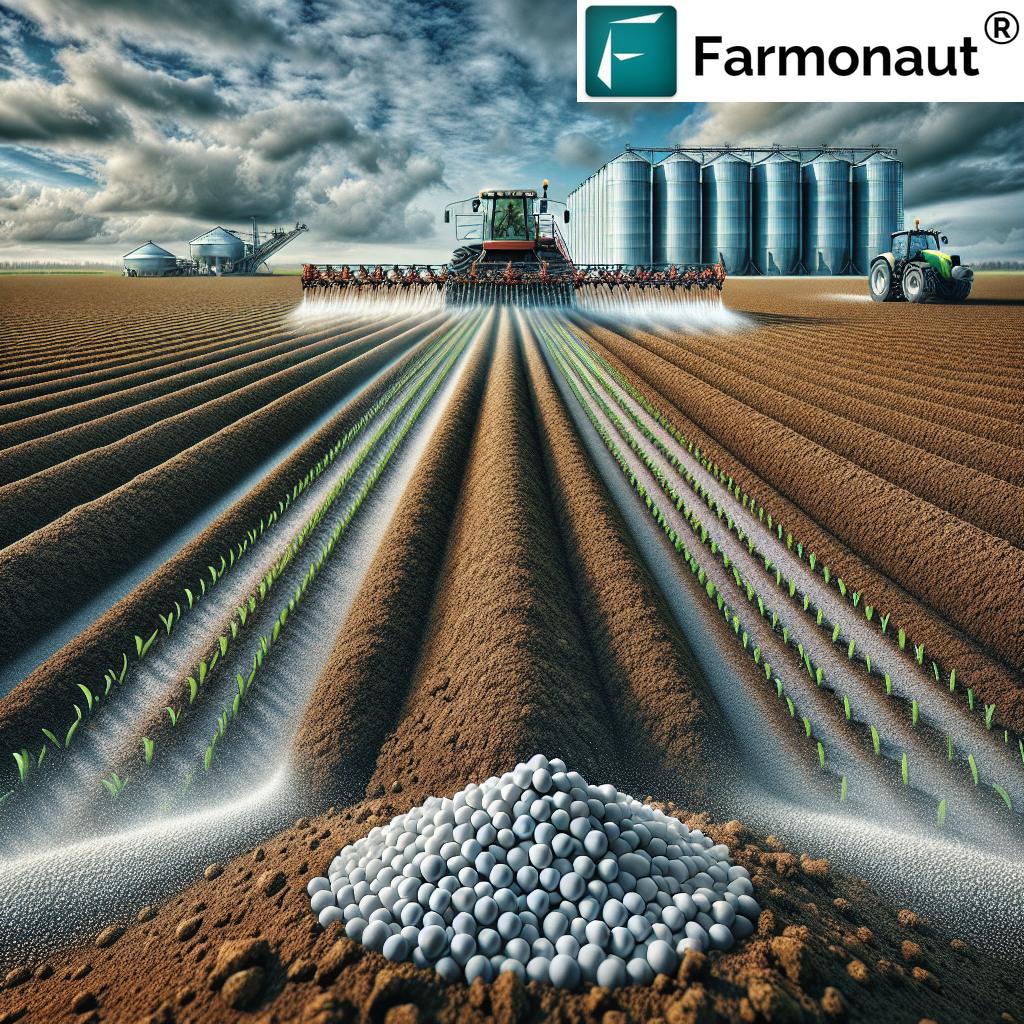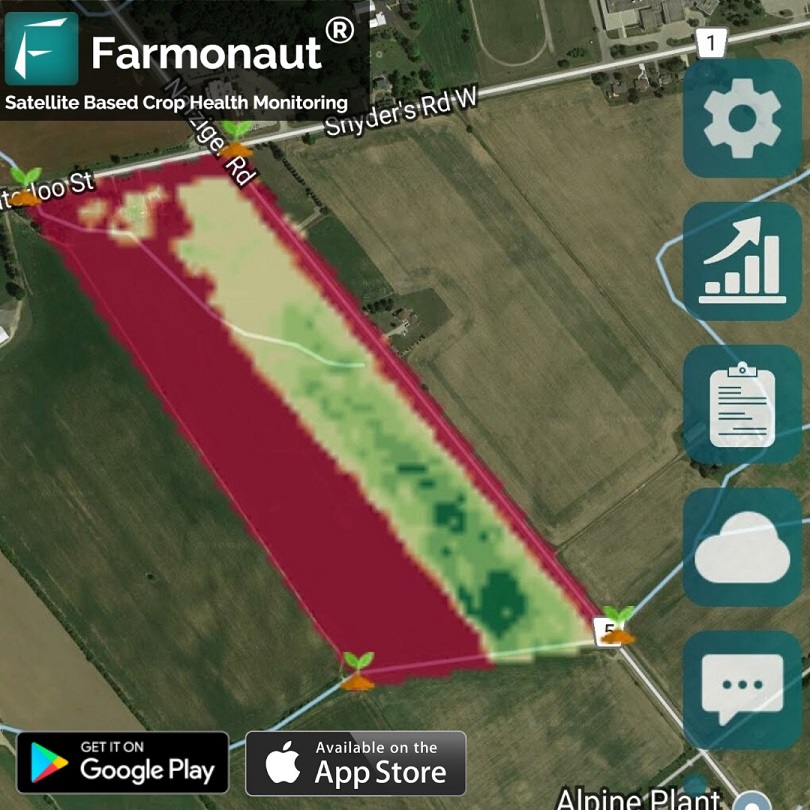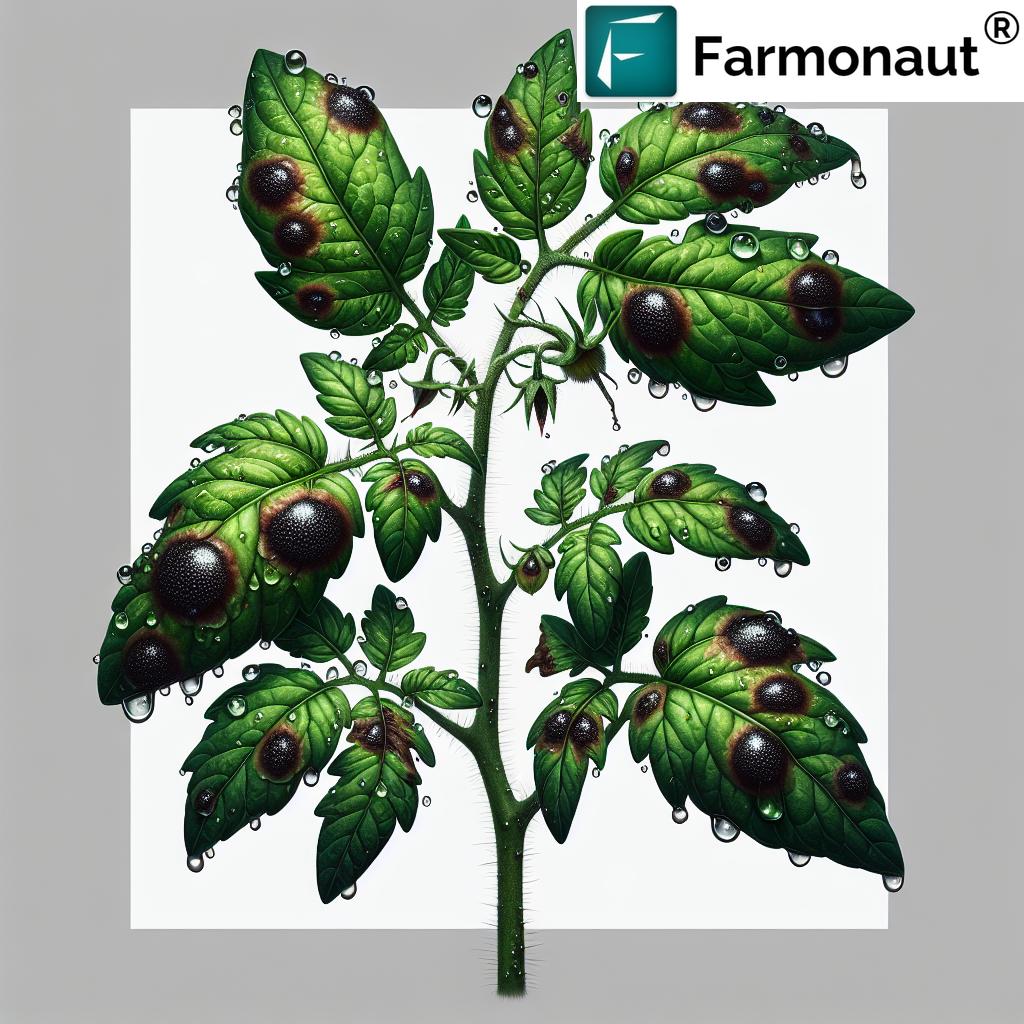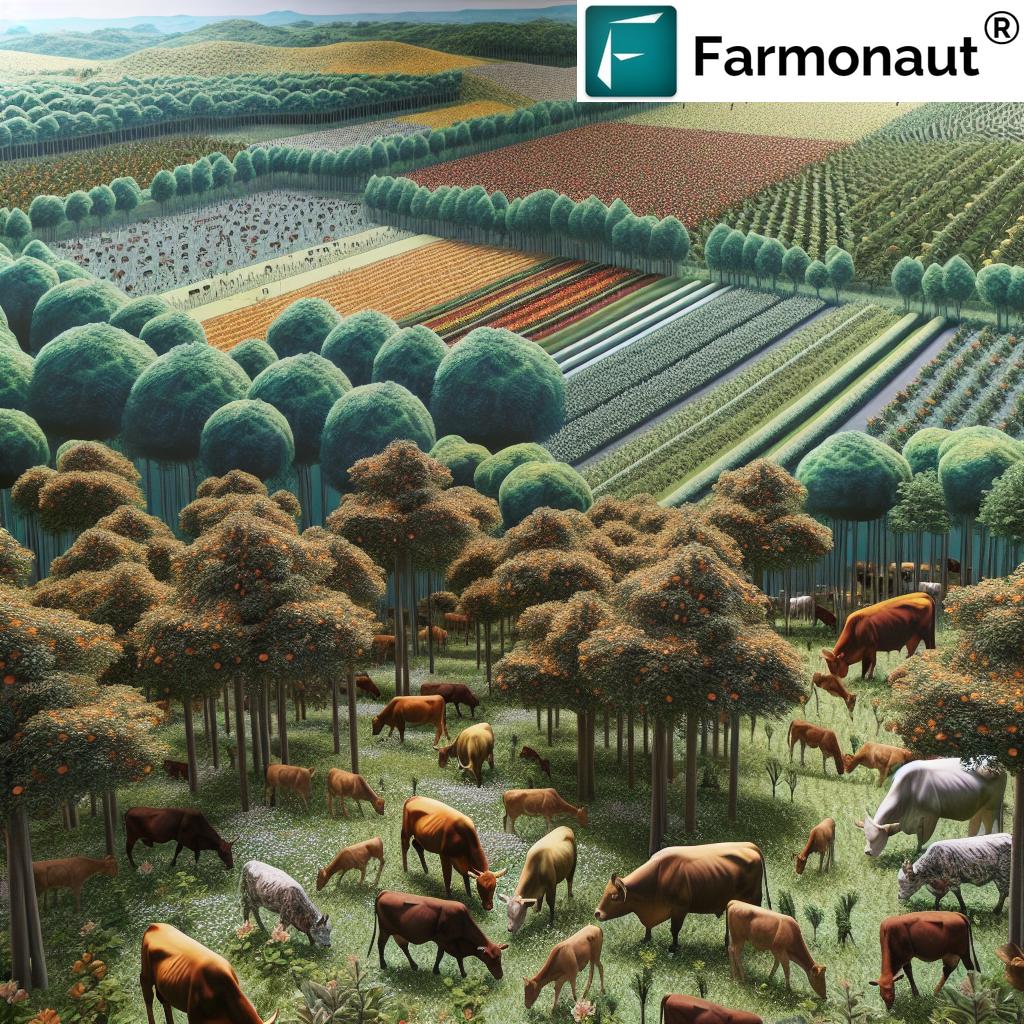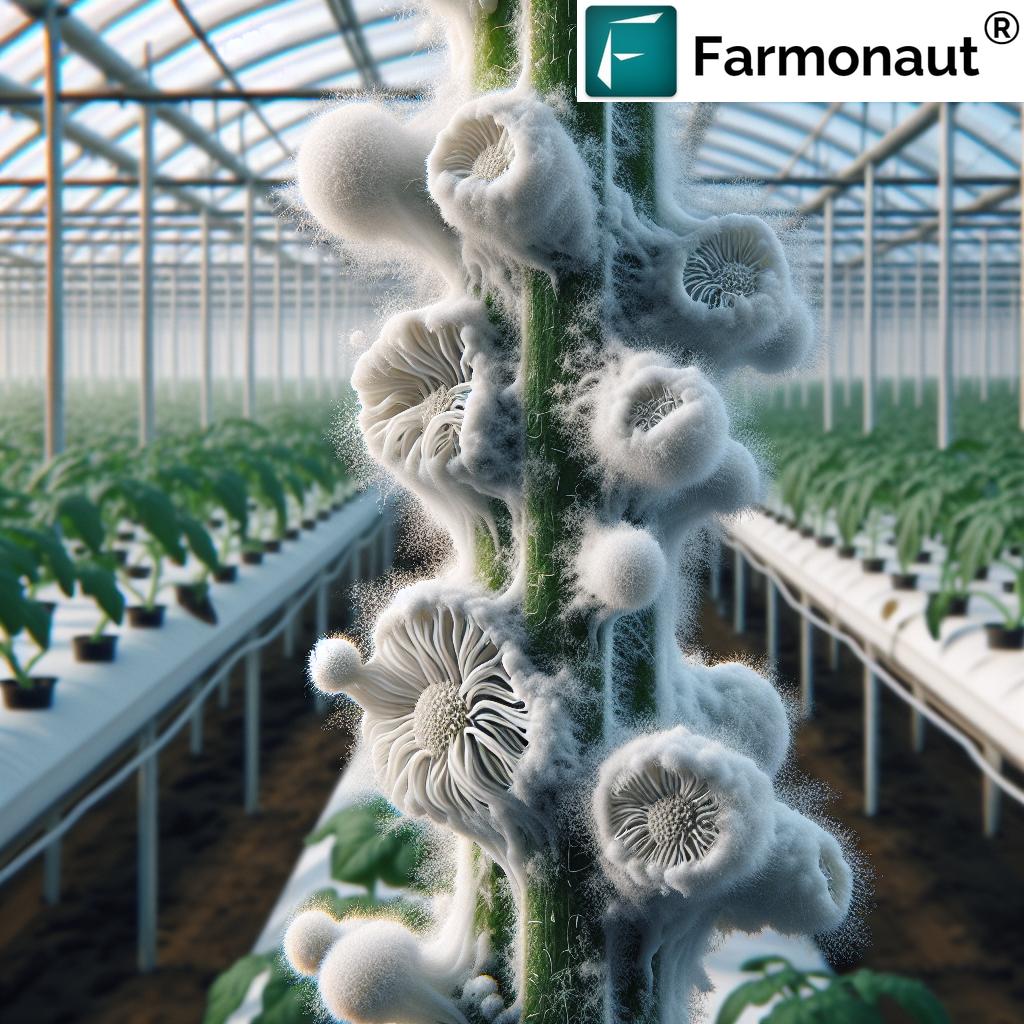What Is Organic Carbon? 7 Powerful Ways to Boost Soil Health
Table of Contents
- What Is Organic Carbon?
- Soil Organic Carbon Trivia
- Understanding Organic Carbon in Soil
- The Role of Organic Carbon in Soil Health
- Organic Carbon and the Carbon Cycle
- 7 Powerful Ways to Boost Soil Health with Organic Carbon
- Soil Organic Carbon Enhancement Strategies Comparison Table
- Videos: Unlocking the Power of Organic Carbon
- Organic Carbon in Forestry and Land Management
- Challenges and Considerations for Managing Soil Organic Carbon
- Farmonaut Solutions for Soil and Carbon Management
- Frequently Asked Questions
- Conclusion
- Farmonaut Subscriptions
“Soil organic carbon can make up to 58% of total soil organic matter, crucial for soil fertility and structure.”
What Is Organic Carbon?
Organic carbon is a key component of soil organic matter (SOM), comprising carbon compounds derived from the decomposition of plant and animal residues. It forms through a natural process involving the breakdown of biomass—including crop residues, leaf litter, root exudates, manure, and microbial by-products. As these organic materials decompose, they create substances essential for fertility, structure, and overall soil health.
Understanding how organic carbon contributes to the broader carbon cycle, soil fertility, and climate mitigation is crucial for adopting sustainable land management practices and supporting resilient agricultural and forestry systems. This blog post will provide a comprehensive examination of soil organic carbon, the factors influencing its concentration, the role it plays in agroecosystems, and 7 powerful, science-backed ways to increase it for healthier, more productive soils.
“Globally, soils store about 2,500 gigatons of carbon—more than three times the carbon in the atmosphere.”
Understanding Organic Carbon in Soil
Soil organic carbon originates from the continuous accumulation of decomposed plant and animal residues. These inputs undergo microbial processing, resulting in the formation of humus—a stable component of organic matter in soil that is resistant to further decomposition.
- Plant and Animal Inputs: Leaves, roots, stems, manure, dead insects, and crop residues contribute fresh carbon to soil.
- Microbial Activity: Microorganisms (bacteria, fungi, actinomycetes) drive the breakdown of organic compounds, transforming them into smaller units.
- Humus Formation: With time, stable compounds (humic substances) accumulate, providing long-term carbon storage.
The concentration of soil organic carbon is influenced by:
- Climate: Temperature and precipitation affect the rates of decomposition and the balance between inputs and outputs.
- Soil Type: Clay-rich soils often stabilize more organic carbon, while sandy soils have less SOM retention.
- Land Use and Management: Tillage, cropping, grazing, and fertilization practices can either build or deplete organic carbon stocks.
The equilibrium between organic matter addition and decay dictates the overall soil organic carbon stocks. When inputs from crop residues and manures exceed the rates of decomposition, soil carbon increases, improving soil health.
The Role of Organic Carbon in Soil Health and Fertility
Why is organic carbon so important for our soils? Let’s explore the multiple benefits:
- Soil Structure Improvement: Organic carbon facilitates the formation of stable aggregates, which increases porosity, water infiltration, and reduces soil disturbance.
- Nutrient Supply: Decomposition of organic matter releases nutrients (especially nitrogen, phosphorus, sulfur) that become available to plants, maintaining soil health and fertility.
- Microbial Activity & Community: Soils with higher organic carbon support a vibrant microbial community. This amplification of microbial cycling helps in disease suppression and more efficient nutrient cycling.
- Water Retention & Drought Resistance: Organic matter acts like a sponge, improving water-holding capacity and helping plants withstand dry periods.
- Erosion Control: With better aggregation and plant cover, soils rich in organic carbon are more resistant to erosion, reducing loss of fertility.
Organic Carbon and the Carbon Cycle
Soil is the planet’s largest terrestrial carbon sink, storing more carbon than the atmosphere and all above-ground vegetation combined. Here’s how the carbon cycle works:
- Input: Plants absorb CO₂ from the atmosphere and incorporate it into biomass.
- Transfer to Soil: Plant materials, root exudates, and animal remains become part of the soil as organic matter.
- Decomposition & Sequestration: Microbes digest residues, some of which are released back as CO₂ (emission), but a portion becomes humus—effectively sequestering carbon for decades or centuries.
Well-managed agroecosystems with continuous carbon inputs and reduced disturbance can increase soil carbon stocks, mitigate climate change, and reduce greenhouse gas emissions. Agricultural practices that build organic carbon storage contribute directly to regulating atmospheric CO₂.
7 Powerful Ways to Boost Soil Health with Organic Carbon
Here are seven proven agricultural practices influencing soil organic carbon—all supported by recent research and sustainability frameworks.
-
Reduced Tillage
- How it Works: By minimizing soil disturbance, reduced or no-till farming helps preserve soil structure and limit the oxidation of organic carbon.
- Benefits: Preserves aggregates, encourages microbial activity, curtails erosion, and often increases organic matter in soil.
- SEO Connection: Reduced tillage is a key way to increase soil carbon and improve soil structure.
-
Cover Cropping
- What is it?: Planting cover crops during fallow or off-season periods adds biomass that decomposes, feeding the SOM pool.
- Benefits: Shields soil from erosion, increases organic inputs, and boosts microbial cycling. The cover cropping benefits are maximized when paired with no-till practices.
- SEO Connection: Enhances soil fertility, builds health, and fosters carbon sequestration in agriculture.
-
Organic Amendments
- Definition: The addition of compost, manure, biosolids, and other organic inputs to the soil.
- Benefits: Adds fresh organic matter, stimulates microbial activity, improves nutrient cycling, and promotes higher soil organic carbon concentrations (evidence).
- SEO Connection: A reliable method to improve soil health and fertility quickly.
-
Agroforestry and Tree Planting
- Agroforestry: Integrates trees into cropping systems (e.g., alley cropping, silvopasture).
- Impact: Trees supply continuous litter and roots, stabilizing soil and raising both above- and below-ground carbon stocks.
- SEO Connection: Key for carbon storage in forestry and in diversifying agricultural carbon sinks. More detail at Agroforestry.
-
Managing Crop Residue & Biomass
- Practices: Leave root and shoot residues from harvesting in the field rather than burning or removing them.
- Benefits: Maintains a steady carbon input, encourages the formation of humus, and supports soil microbial communities.
- SEO Connection: Enhances soil organic carbon stocks without intensive labor or inputs.
-
Rotational Grazing & Pasture Management
- What is it?: Well-planned movement of grazers (livestock) to prevent overgrazing, maintaining vegetation cover.
- Benefits: Promotes deep, healthy root systems, organic matter formation, and overall soil health improvement.
- SEO Connection: Supports carbon sequestration in agriculture and resilience.
-
Reforestation, Afforestation, and Forest Management
- Reforestation: Planting trees on degraded or treeless lands.
- Forest Management: Practices like selective logging and thinning maintain the existing carbon stocks with less disturbance.
- Benefits: Both increase landscape-level carbon storage, improve biodiversity, and combat climate change by reducing atmospheric CO₂.
- SEO Connection: Essential for landscape-level carbon sequestration.
Soil Organic Carbon Enhancement Strategies Comparison Table
| Practice | Estimated Increase in Soil Organic Carbon (% per year) |
Relevant Soil Health Benefit | Applicability | Carbon Sequestration Potential |
|---|---|---|---|---|
| Reduced Tillage | 0.1–0.3% | Improves soil structure, preserves SOM | Most temperate & tropical cropping systems | Moderate |
| Cover Cropping | 0.2–0.4% | Prevents erosion, adds organic matter | Annual & perennial cropping regions | High |
| Organic Amendments | 0.3–0.8% | Boosts microbial activity, nutrient cycling | Universal – any farm/garden scale | High |
| Agroforestry | 0.3–0.7% | Diversity, water retention, carbon storage | Tropics, subtropics, semi-arid, temperate | High |
| Managing Crop Residues | 0.1–0.3% | Humus formation, supports soil biology | Grains, pulses, sugarcane, horticulture | Moderate |
| Rotational Grazing | 0.2–0.6% | Stimulates root growth, prevents compaction | Grasslands, rangelands, silvopasture | High |
| Reforestation/Afforestation | 0.4–1.0% | Long-term carbon storage, biodiversity | Degraded, marginal, forested land | Very High |
Videos: Unlocking the Power of Organic Carbon
“Soil organic carbon can make up to 58% of total soil organic matter, crucial for soil fertility and structure.”
Organic Carbon in Forestry and Land Management
Forestry practices have profound impacts on organic carbon pools. Effective forest management is essential for both carbon storage and soil health improvement.
- Sustainable Logging: Selective and reduced-impact logging minimizes soil disturbance, helping maintain carbon stocks.
- Reforestation & Afforestation: Planting trees in degraded or non-forest lands captures substantial carbon, with positive feedback on landscape and soil.
- Controlled Burning & Thinning: Strategic interventions limit wildfire risk—protecting both biomass carbon and underlying SOM.
These sustainable land management practices form a backbone for climate change mitigation, soil fertility improvement, and overall ecosystem resilience.
Challenges and Considerations for Managing Soil Organic Carbon
Despite the promise of increasing soil organic carbon, there are real-world challenges:
- Measurement & Monitoring: Consistent methods across time are needed to track changes in SOM content—a process that can be resource-intensive. Platforms like Farmonaut provide remote monitoring and organic carbon estimation using satellite data.
- Climate Variability: Temperature or precipitation swings alter decomposition rates and can lead to unpredictable carbon cycles.
- Land-Use Trade-offs: Some carbon-enhancing practices may have side-effects (e.g., increased pest activity with reduced tillage, nutrient imbalances with excessive organic inputs).
Adaptive management, based on data-driven insights, is critical for finding the right balance between soil, crop, and climate needs.
Farmonaut Solutions for Soil and Carbon Management
At Farmonaut, we believe that empowering sustainable agriculture starts with access to precise, cost-effective data. That’s why our platform provides:
- Satellite-Based Soil & Crop Health Monitoring: Our AI-driven system applies multi-spectral imagery to assess soil health status, organic carbon concentration, moisture levels, and other key agro-ecological indicators.
- Jeevn AI Advisory System: Real-time, localized advice harnessing remote-sensing data, weather, and crop inputs to increase soil carbon and optimize nutrient cycling.
- Carbon Footprinting Tool: Track farm, plantation, or agribusiness emissions and soil carbon storage. We help clients monitor and reduce greenhouse gas emissions and comply with climate action goals.
- Blockchain Traceability: Our traceability platform provides complete transparency in supply chains, securing origin data and reinforcing sustainable practices.
- Fleet & Resource Management: With logistics tools, agribusinesses can optimize inputs and reduce operational costs while supporting sustainable practices.
- Large-scale Field and Forest Management: Access our Agro Admin App for managing large operational holdings, ensuring best practices in carbon and resource management at scale.
- Crop Loan & Insurance Services: Satellite-based crop verification reduces fraud and helps more farmers access finance for adopting improved, carbon-friendly methods.
Our technology is accessible on Android, iOS, and web platforms, with dedicated APIs and extensive developer documentation for integration into your existing farm management systems.
Frequently Asked Questions
What is soil organic carbon?
Soil organic carbon is the portion of soil organic matter composed of carbon compounds derived from decomposed plant and animal residues. It is fundamental to soil fertility, structure, and climate regulation.
How can you increase soil organic carbon?
- Adopt reduced or no-till practices
- Integrate cover crops and keep soil covered year-round
- Add compost or organic amendments
- Integrate agroforestry or tree planting
- Retain crop residues in the field
- Practice rotational grazing if managing pasture
- Pursue reforestation or afforestation for degraded lands
Why does organic carbon matter for climate change?
Soils act as major carbon sinks, storing more carbon than the atmosphere and vegetation combined. Increasing soil organic carbon helps lock away CO₂, mitigating global warming and reducing greenhouse gas emissions.
Which type of soil holds the most organic carbon?
Clay-rich and well-structured soils tend to retain more organic carbon due to better stabilization and slower decomposition rates.
What is the difference between organic carbon and organic matter?
Organic matter includes all plant, animal, and microbial remains in the soil. Organic carbon is a measurable component of organic matter, typically making up around 58% of total organic matter.
Can digital technologies help manage soil organic carbon?
Yes! Farmonaut provides satellite and AI-based tools for real-time soil health monitoring, field mapping, carbon footprinting, and advisory services, enabling efficient, sustainable, and scalable management.
How does cover cropping improve soil carbon?
Cover crops add organic residues, protect soil from erosion, and increase root biomass, building up the soil organic carbon pool over time.
Conclusion
Organic carbon is the foundation for resilient, productive, and sustainable soils. Its presence in soil organic matter enhances structure, supports vibrant microbial communities, boosts long-term fertility, and acts as a powerful natural tool against climate change.
By adopting sustainable land management practices like cover cropping, reduced tillage, organic amendments, and wise forestry practices, we maximise carbon sequestration in agriculture and forested systems alike. These actions help restore the balance of the global carbon cycle while ensuring ongoing productivity.
As digital and data-driven innovation accelerates, platforms like Farmonaut are making it easier than ever for farmers and agribusinesses to measure, manage, and enhance soil organic carbon—unlocking a new era in climate-smart farming.
Farmonaut Subscriptions
Ready to transform your soil management and maximize carbon sequestration? Explore Farmonaut’s affordable, scalable subscriptions for all farm sizes:
Join leading farmers and agribusinesses worldwide. Harness the power of data, increase your soil organic carbon, and build a sustainable future with Farmonaut today!










